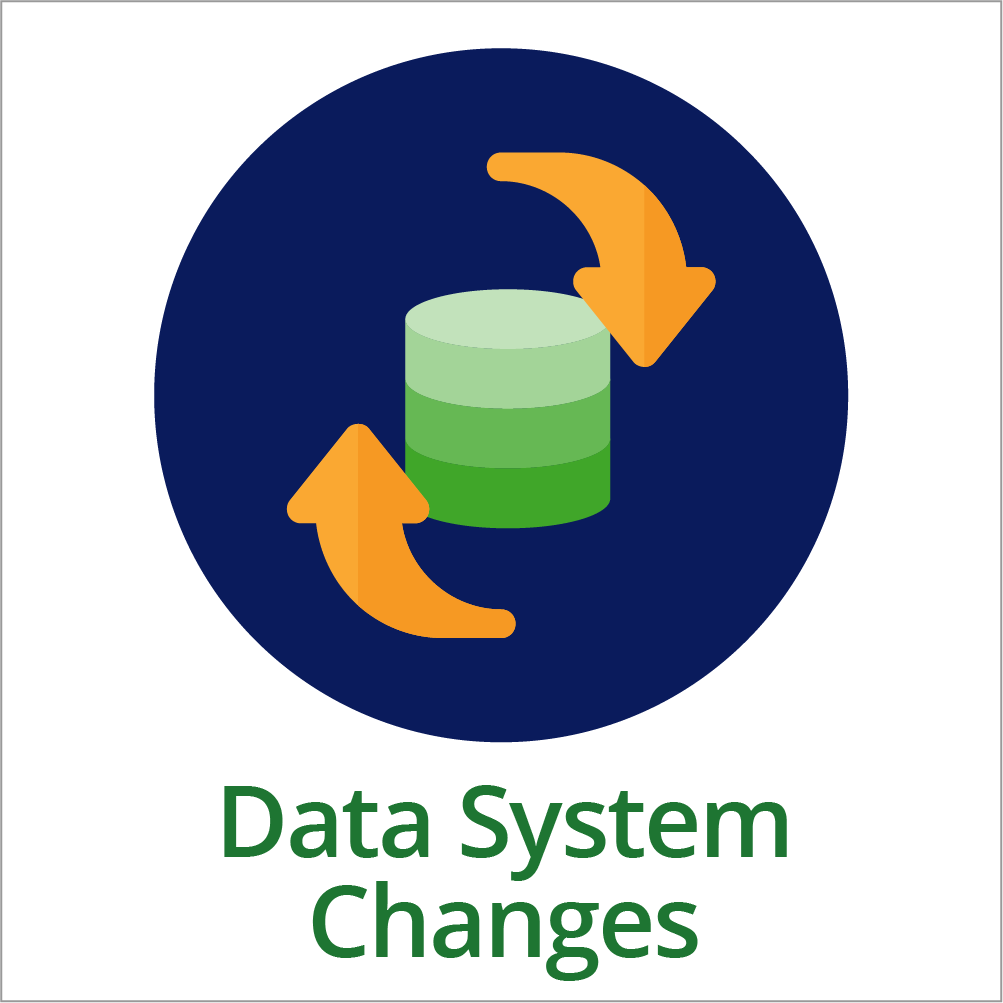- Overview
- Introduction
- Data Breach Response
- Data Quality
- Data Security and Access
- Data System Changes
- Public Reporting
- Electronic Communications
- Data Requests
- Data Retention and Destruction
- Data Governance Resources

State Part C and Part B 619 programs will encounter the need for changes in their data system(s). Many changes to an existing data system can affect work conducted at the state, local/district, and/or provider levels. Therefore, while Part C and Part B 619 staff may not be directly involved in the technical changes made to data systems that directly affect their work, the state should establish a process for Part C and Part B 619 program staff to be actively involved in partnering with IT staff when considering data system changes that will affect their data and work. This section contains topical information, a packet with a considerations worksheet and a policy template, and an option to request technical assistance.
Even the addition of a single response option to an established data element could have significant and far-reaching implications to business rules, data collection screens, supported forms, post-collection analysis, reports, data dictionary, trainings, and the like.
 Considering a New Data System?
Considering a New Data System?This section of the Data Governance Toolkit focuses exclusively on policies for changes to existing data systems, not new data systems. Adding a new Part C or Part B 619 data system or replacing an old system is a decision predicated on factors external to established Part C and Part B 619 data governance.
A decision that a new system is decidedly better than enhancing an existing system is based on many considerations. Such a conclusion is supported by factors such as availability of funds (immediate and sustaining), political climate supportive of both state agency and local-level changes required with a new data system, technology alignment, and internal and external agency data integration efforts.
Recommendations or requirements to make changes to a Part C or Part B 619 data system may emanate from many different sources, such as new or modified federal and/or state data collection or reporting requirements; changes to internal program data needs (e.g., monitoring, new reports); recommendations from stakeholders in the field; agency or cross-agency data integration efforts; technical architecture changes; updates to security; or new requirements from IT. These instances can trigger a request to change the content, functionality, technical aspects, or reports associated with an existing data system. Regardless of where the recommendations for change originate, data governance policies should reflect the involvement of Part C or Part B 619 program representatives in considering and deciding data system changes affecting their programs. In many cases, considering a data system change will require that Part C or Part B 619 program staff work closely with agency IT staff so all will understand the overall impact of the requested change.
Any proposed system change must consider the scope of the change and identify the potential impact. A proposed system change can be small and quick to implement, such as addressing a minor bug or spelling error; it can be scheduled and routine, such as an annual update to a list of active agencies; or it can be complex and long term, such as a multiphase enhancement over an extended period to collect more data and develop more complex reports. While a request to change should detail what is desired to be changed and why, a decision to change focuses on the impact the change will have. Part C and Part B 619 staff with content knowledge, as well as IT staff with data system knowledge, must be able to share perspectives on the change impact. Not all change requests necessitate the same level of consideration. For example, correcting a misspelled word might require no additional input and have little (or no) system impact. In contrast, significant consideration would be required to decide on proposing a data system change to add a new data element such as medical diagnosis or updating service delivery codes.
Published February 2021.

